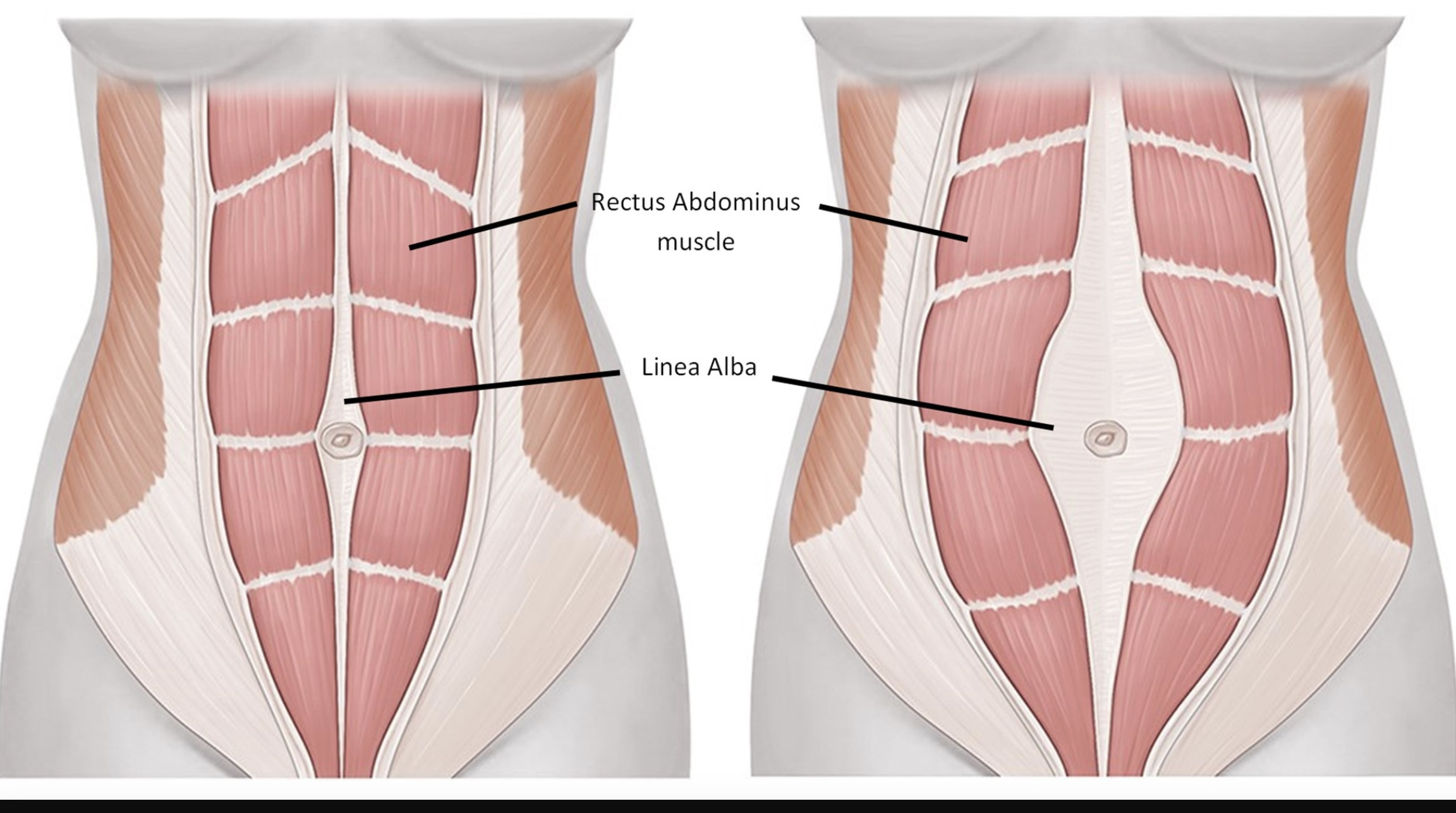I first want to let you all know that it is 100% normal to have a diastasis rectus abdominus (DRA) during pregnancy and ALL PREGNANT WOMEN will have one.
What is it?
In order to accommodate your growing baby, your belly expands and your 2 abdominal muscles that make up your rectus abdominus (your 6 pack abs) separate further apart along their vertical tendinous connection called the linea alba.
What does it look like?
Often, we have come to fear the separation that occurs, and I want to stress today that you are not doing anything wrong if it is present AND you may see it with different activities which is normal. The DRA can present as coning or doming along the midline. If you are pregnant or postpartum, this can be easiest to see when performing a sit up, just lifting your shoulders off of the ground. I’ll link a youtube video HERE at the 1:50 mark.
Should I worry?
No! The presence of a DRA is not harmful. What we want to focus on is your ability to control it. The abdominal muscles are the front wall of what we refer to as your “core canister.” The back musculature is the back wall, your oblique muscles are the sides, the diaphragm is the top and the pelvic floor is the bottom. When you use your trunk, which is basically everything functional you do, you will in some way brace your midline musculature of your “core canister”. That provides you stability to move your limbs for whatever it is you are doing.
In some instances, the pressure created inside that “core canister” is greater than you can control with your musculature at that given time, so it pushes against the point of least resistance. In many cases, especially when pregnant, that is along the linea alba, or DRA, and you will see coning. Postpartum, you may still see coning, or it may be harder to visualize once your pregnant belly isn’t there. In that case, you can assess it yourself or with a pelvic floor PT. I’ll link an IG post on that HERE.
When assessing, we are looking both for the amount of separation and the tissue tension you are able to create.
What can I do about it?
- Use pressure management strategies
Proper bracing can allow you to more evenly distribute pressure throughout your core canister which then allows for a reduction in the coning/doming present with various movements. HERE and HERE are IG posts on bracing.
2. Modify exercise movements as needed to limit repeated coning/doming
We like to keep our clients in the gym doing what they love. Not only is complete rest detrimental, exercise is beneficial to every single person, including your baby. What does that look like? A few reps of a movement with coning present is no big deal. What we try to limit is high volume repetition because it indicates more of a pressure demand than your body is accommodating at that specific time. That may be dropping off the bar for pull ups and doing a standing version of lat strengthening. It may be using a box for squatting to help control pressure at depth. It may mean using dumbbells instead of a barbell for overhead movement to limit the amount of extension the body has to go into. It varies for every person.
3. Strengthen your abs!
Train your abs in pregnancy. That may sound controversial, but with appropriate modifications it can be done. Using a band to assist a sit up or completing an elevated plank vs one on the floor are 2 simple examples.
4. See a pelvic PT
Have no idea where to start or just want professional guidance. Reach out to schedule or find a pelvic PT near you and let us guide you in this process.
I want to stress that the presence of a DRA is normal during pregnancy and postpartum. For many women, these separations persist for a LONG time postpartum or may never go away when assessed. However, it can be controlled and managed via pressure management strategies and strengthening.
